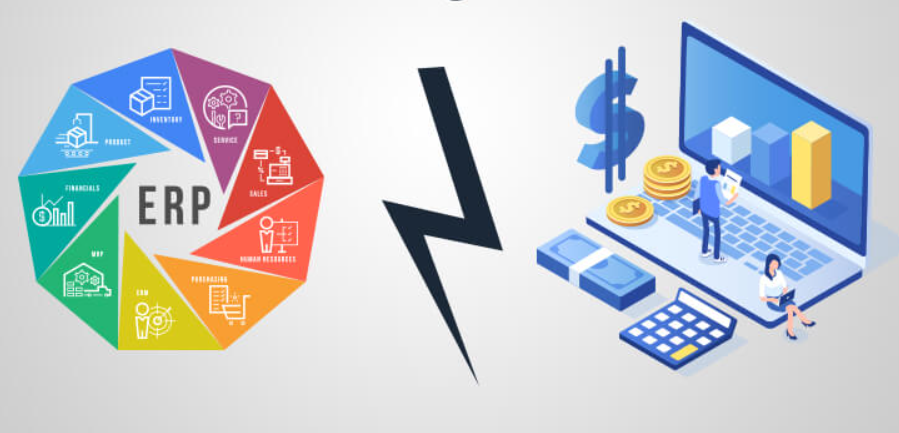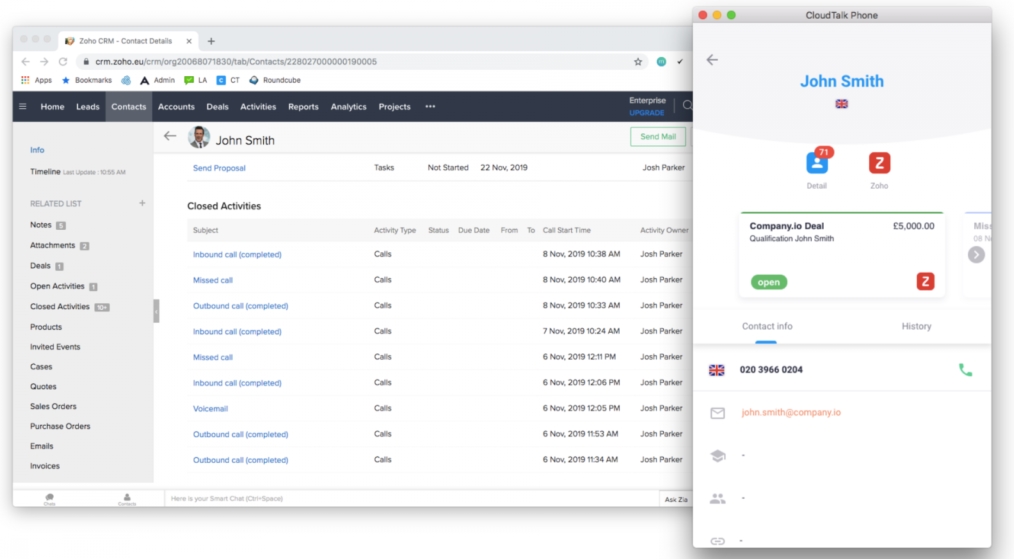Checking vs. Savings Accounts: A Comprehensive Guide

When it comes to financial planning, the choice between a checking vs. savings accounts is pivotal.
These financial instruments serve distinct purposes, each with its unique set of features and benefits.
In this comprehensive guide, we will explore the fundamental differences between checking and savings accounts, offer insights into maximizing their utility. And assist you in making informed decisions to bolster your financial stability and growth.
Anúncios
What are the Differences Between a Checking Account and a Savings Account?
Understanding the nuances between checking and savings accounts is crucial for effective financial management.
A checking account serves as the operational hub for daily transactions, allowing for seamless bill payments, debit card usage, and ATM withdrawals.
Anúncios
Its primary function is to provide accessibility and liquidity for your day-to-day financial needs.
Conversely, a savings account is designed to be a repository for accumulating funds over time, offering higher interest rates to incentivize savings.
This interest, although typically modest, contributes to the growth of your savings, making it an ideal choice for those looking to build an emergency fund or work towards specific financial goals.
Beyond interest rates, another differentiating factor is the liquidity of funds. Checking accounts provide immediate access to your money.
While savings accounts may have restrictions on the number of withdrawals per month, encouraging account holders to maintain a disciplined approach to savings.
By recognizing these differences, you can tailor your choice based on your financial objectives.
How to Use a Checking Account
Have questions about how to use Checking Accounts? Check out the step-by-step instructions and tips we’ve put together below.
Selecting the Right Checking Account:
Look for accounts with no monthly maintenance fees or easy ways to waive them.
In this way, consider financial institutions that offer sign-up bonuses for opening a new checking account.
But prioritize accounts with free access to a large ATM network to avoid additional fees.
Understanding Debit Card Usage:
Utilize the debit card associated with your checking account for everyday transactions. And monitor your debit card transactions regularly through online banking or mobile apps.
Be mindful of your spending habits to avoid overdraft fees and maintain a positive account balance.
Online Banking Features:
Familiarize yourself with the online banking features provided by your financial institution.
The tip is to set up account alerts to receive notifications about transactions, low balances, or other account activities.
Explore online bill payment services to streamline the process of paying bills directly from your checking account.
Overdraft Protection:
Link a savings account to your checking account for overdraft protection.
At the same time, understand the overdraft policies of your financial institution to avoid unexpected fees.
So, consider opting out of overdraft protection if you prefer transactions to be declined when there are insufficient funds.
Security Measures:
Strengthen the security of your checking account by enabling multi-factor authentication.
That way, regularly update passwords and PINs associated with your account.
Be cautious when using ATMs and ensure the security of your personal identification number.
Mobile Banking Apps:
Download and utilize the mobile banking app provided by your financial institution. And take advantage of features like mobile check deposit and fund transfers for added convenience.
Ensure the security of your mobile banking app by using biometric authentication methods if available.
Record-Keeping Practices:
Maintain organized records of your transactions, either digitally or through a check register.
Therefore, reconcile your account regularly to identify any discrepancies or unauthorized transactions.
Keep track of automatic payments and scheduled transactions to avoid overdrafts.

Tips for Using a Savings Account
Now, how about checking out tips for using Savings Accounts and making the most of what they can offer? Check out!
Check out and better understand the differences between checking vs. savings accounts.
Choosing the Right Savings Account:
Seek savings accounts with competitive Annual Percentage Yields (APYs) to maximize interest earnings.
Prioritize accounts with minimal or no monthly maintenance fees to retain more of your earned interest.
Therefore, consider online banks and credit unions, which often offer higher APYs compared to traditional brick-and-mortar institutions.
Setting Up Automatic Transfers:
Establish automatic transfers from your checking account to your savings account.
And determine a consistent transfer schedule based on your financial goals and budget.
You can also automated transfers promote disciplined saving without relying on manual efforts.
Emergency Fund Building:
Allocate a portion of your savings account for building an emergency fund and aim for at least three to six months’ worth of living expenses in it.
But remember to reassess and adjust your emergency fund target based on changes in your financial situation.
Understanding Withdrawal Limits:
Be aware of the monthly withdrawal limits imposed by your savings account.
In this way, reserve your savings for true financial needs and emergencies rather than regular expenses.
Explore alternative savings options, such as money market accounts, for increased flexibility.
Comparing Savings Alternatives:
Research and compare different savings alternatives, such as money market accounts and certificates of deposit (CDs).
Evaluate the trade-offs between liquidity and higher interest rates offered by alternative savings options.
Diversify your savings strategy based on your financial goals and risk tolerance.
Taking Advantage of Bonus Offers:
Keep an eye out for promotional offers and bonuses provided by financial institutions for opening a new savings account.
That way, capitalize on cash bonuses or interest rate boosts to enhance your savings growth.
Understand the terms and conditions of bonus offers, including any required minimum deposits or account maintenance criteria.
Regularly Reviewing Interest Rates:
Stay informed about changes in interest rates and APYs offered by your savings account.
Monitor economic trends and central bank policies that may influence interest rate fluctuations.
Consider adjusting your savings strategy based on the prevailing interest rate environment.

Are Interest Rates Fixed on Savings and Checking Accounts?
Now that you know the differences between checking vs. savings accounts, it’s time to find out more about interest rates.
Interest rates on both checking and savings accounts are typically variable, influenced by market conditions and economic factors.
While checking accounts may offer minimal interest, savings accounts provide an opportunity for higher returns, especially with the current trend of increasing interest rates.
The variability of interest rates means that your earnings can fluctuate over time. It’s essential to stay informed about changes in rates and periodically reassess your account choices to ensure you’re maximizing your returns.
For those seeking a more stable and fixed return on their savings, certificates of deposit (CDs) offer a fixed interest rate for a specified period.
CDs, however, come with the trade-off of limited liquidity, as withdrawing funds before the maturity date may incur penalties.
Understanding the dynamics of interest rates empowers you to make strategic decisions aligned with your financial goals.
Checking Account vs. Savings: After All, Which One to Use?
Still in doubt between checking vs. savings accounts and which one to choose? Let’s help you!
Below, we’ve gathered the main points about each type of account and what you should pay attention to when choosing. Read with us!
Advantages of Using a Checking Account:
- Immediate Accessibility: Checking accounts provide quick and easy access to funds, making them ideal for daily transactions and expenses.
- Convenience of Transactions: The inclusion of features like debit cards, online banking, and mobile apps enhances the convenience of managing everyday financial activities.
- Overdraft Protection: Linking a savings account to your checking account offers a safety net by providing overdraft protection, ensuring that transactions are covered even when your checking balance is insufficient.
Drawbacks of Using a Checking Account:
- Lower Interest Rates: Checking accounts typically offer minimal to no interest on deposited funds, resulting in limited opportunities for financial growth.
- Impulse Spending Risks: The immediate accessibility of funds may lead to impulsive spending habits, requiring discipline to maintain a positive account balance.
- Transaction Limitations: Some checking accounts may have limitations on the number of transactions or withdrawals allowed per month.
Advantages of Using a Savings Account:
- Higher Interest Rates: Savings accounts, with their focus on long-term growth, offer higher interest rates compared to checking accounts, contributing to the accumulation of wealth over time.
- Financial Goal Achievement: Savings accounts are instrumental for achieving specific financial goals, such as saving for a down payment, emergency fund creation, or other future expenses.
- Discourages Impulsive Spending: The limitations on withdrawals in savings accounts discourage unnecessary spending, promoting a disciplined approach to saving.
Drawbacks of Using a Savings Account:
- Limited Access to Funds: Savings accounts may have restrictions on the number of withdrawals allowed per month, potentially causing inconvenience if immediate access to funds is required.
- Variable Interest Rates: While savings accounts offer higher interest rates, these rates are subject to change based on market conditions, influencing the overall returns on your savings.
- Minimum Balance Requirements: Some savings accounts may have minimum balance requirements to qualify for higher interest rates, which could pose challenges for those with fluctuating account balances.
Using Both Accounts Strategically
- Emergency Fund Allocation: Designate a portion of your savings account for building an emergency fund, ensuring financial preparedness for unexpected expenses.
- Everyday Transactions: Utilize your checking account for daily transactions, bill payments, and regular expenses to capitalize on its accessibility and convenience.
- Automated Transfers: Set up automated transfers from your checking to your savings account to ensure consistent savings efforts without manual intervention.
Considering Relationship Benefits
- Combined Account Convenience: Maintaining both a checking and savings account at the same institution offers consolidated account management through one statement or online platform.
- Potential Fee Waivers: Some banks may provide fee waivers or relationship benefits for customers holding both types of accounts, leading to potential cost savings.
- Evaluating Individual Preferences: Assess individual financial preferences and priorities to determine the most suitable combination of accounts, considering factors like interest rates, fees, and convenience.
Conclusion
The choice between a checking vs. savings accounts is a nuanced decision that requires a thorough understanding of your financial needs and goals.
By recognizing the distinctive features of each account and leveraging them strategically, you can optimize your financial management.
Whether you prioritize accessibility and immediate liquidity with a checking account or seek long-term growth and savings with a savings account, a thoughtful and personalized approach ensures a well-rounded financial strategy.
Evaluate the advantages and drawbacks of each account type, consider your individual financial circumstances, and create a financial plan that aligns with your aspirations.
The synergy of both checking and savings accounts can contribute to a robust and resilient financial foundation.





